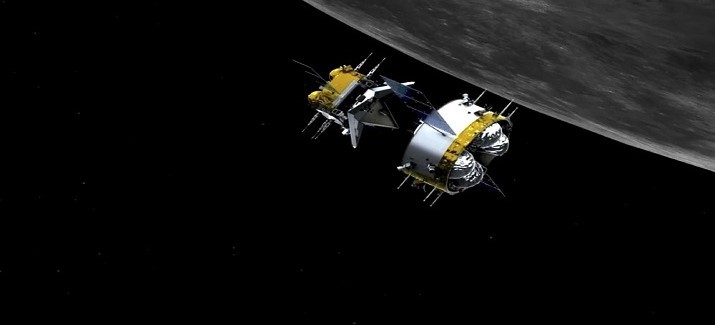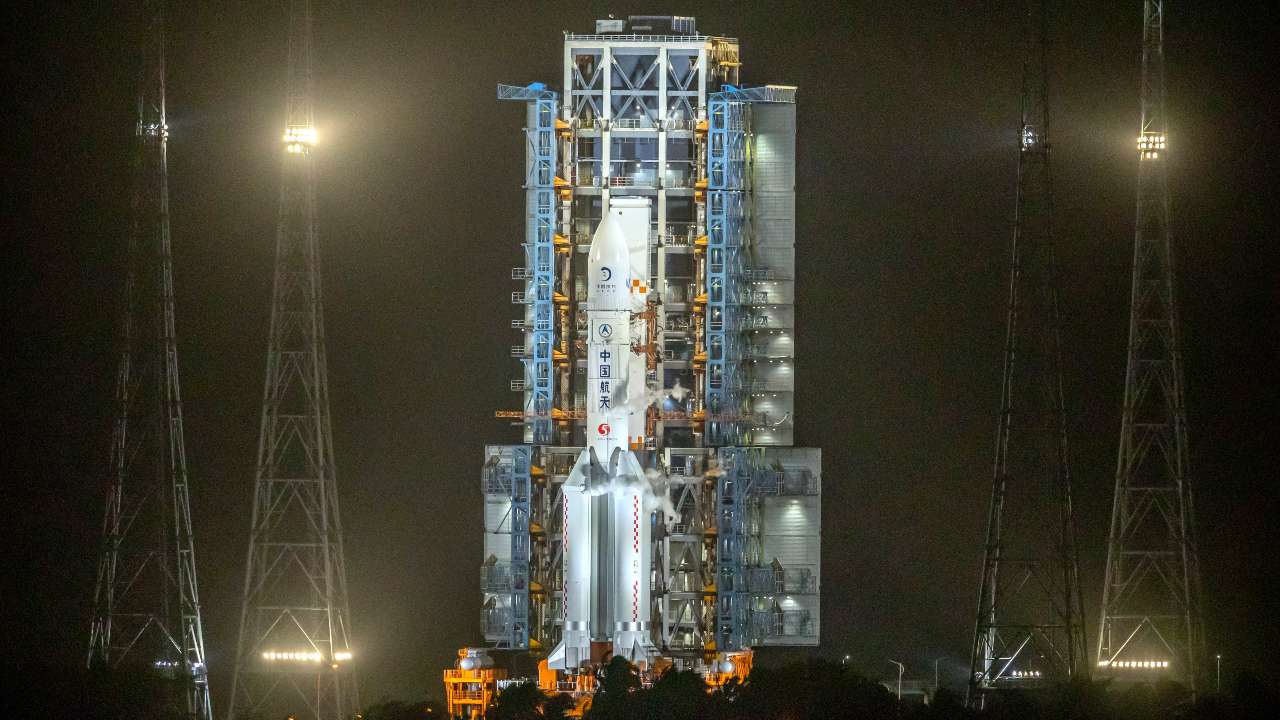Moon Rocks Were Brought to Earth by A Chinese Capsule

In more than 40 years, first fresh samples of debris and rock has been returned to Earth by a Chinese lunar capsule. Chang’e 5 probe’s capsule has been landed in the Siziwang district of the Inner Mongolia region on 17th December 2020, media has reported this shortly after 2:00 a.m. (1800 GMT)
In order to reduce its speed before passing through and to float to the ground on parachutes, the capsule performed a bounce off the Earth’s atmosphere by separating itself from its orbiter module. 2 kilograms (4.4 pounds) of samples were collected by two of the Chang’e 5’s modules set on the moon on 1st of December. These were scooped from the surface and also by drilling around 2 metres (6 feet) into the moon’s crust. These samples were brought back to the return module through an ascent vehicle, the samples were collected and deposited in a sealed container. This was the latest breakthrough for China’s space mission as it was a successful mission. It’s ambitious space program also includes the robotic mission to Mars and for permanent orbiting space station plans.

Helicopters were prepared by the recovery crew off-road vehicles to head home- lunar spacecraft emits signals to locate itself through darkness as China’s far North region is vastly covered in snow and shrouded in darkness. And also, for a long period this place has been used as a landing site for Shenzhou crewed spaceships owned by China. The return of the spacecraft has indicated that the scientists have brought fresh samples of lunar rocks for the first time since 1976’s the former Soviet Union’s Luna 24 robot probe.
The debris and rocks obtained are considered to be billions of years younger than what’s obtained by the former Soviet Union and by the U.S. This probably offers new insights to the moon’s history and other solar system bodies. In ancient times a site named Mons Rumker was believed to be volcanic, and these rocks and debris come from Oceanus Procellarum, or Ocean of storms which is a part of the moon that’s near the site Mons Rumker. From 1969 to 1972, lunar samples for about 382 kilograms (842 pounds) were brought by the U.S astronauts, they were analyzed with age and composition and shared with other countries likely. On 23rd of November Chang’e 5 was blasted off from China’s southern island province launch base.
The moon lander stopped functioning and came to rest on the moon’s surface after been used as a launching pad for the ascender, that was used to transfer the samples and later ejected from the orbiter. It was marked as the third successful lunar landing of China but the one to lift again from the moon.
The first probe to land on moon’s little-explored far side was Chang’e 4, the spacecraft’s predecessor and sends back data on conditions that would affect the stay of humans on the moon. The Chinese Space Programme mainly focuses on the Moon, which holds plans to land humans on the moon and probably build a base. But there are no such timeline or details been announced. In July, China launched the Tianwen 1 probe, which had a robot rover and a lander in order to search for water in the Mars. This is also the effort of China to explore the Mars.
In 1960s the U.S Soviet Space race was marked with launch failures and fatalities when compared to this, China’s space program has taken steps and proceeded more cautiously. After the Soviet Union and the United States, China became the 3rd country to send an astronaut into the orbit on its own in 2003. The latest flight of the mission includes collaboration with the European Space Agency, which helped to monitor the mission thoroughly.
The U.S neglects cooperation between the CNSA and NASA unless approved by the Congress amidst the concerns over the Chinese space program’s secrecy and military connections. This has withheld China from participating in the International Space Station, It has to compensate with the launch of an experimental space station and is planning to complete a permanent orbiting outpost in next two years.




